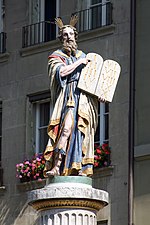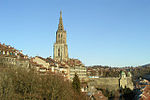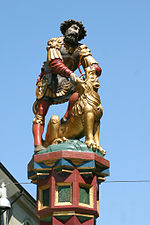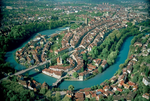Münsterplatz (Bern)
Old City (Bern)Squares in BernUse British English from August 2017

The Münsterplatz is a plaza in the Old City of Bern, the medieval city center of Bern, Switzerland. It is part of the Zähringerstadt which was built during the foundation of the old city in 1191. It is located in front of the Cathedral and it is part of the UNESCO Cultural World Heritage Site that encompasses the Old City.
Excerpt from the Wikipedia article Münsterplatz (Bern) (License: CC BY-SA 3.0, Authors, Images).Münsterplatz (Bern)
Münsterplatz, Bern
Geographical coordinates (GPS) Address External links Nearby Places Show on map
Geographical coordinates (GPS)
| Latitude | Longitude |
|---|---|
| N 46.947244444444 ° | E 7.4508333333333 ° |
Address
Münsterplatz
Münsterplatz
3011 Bern (Stadtteil I)
Bern, Switzerland
Open on Google Maps











